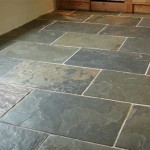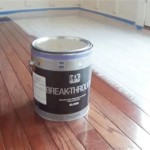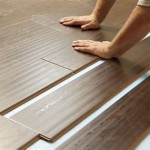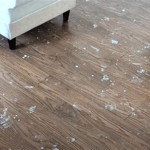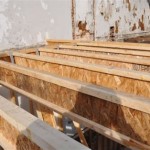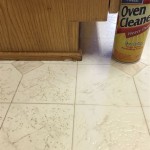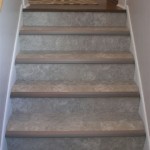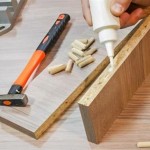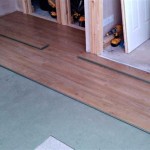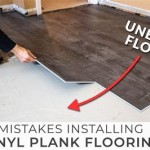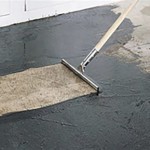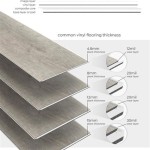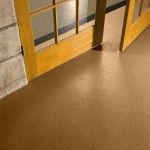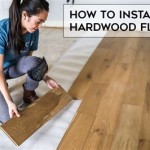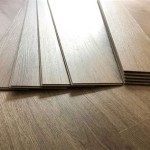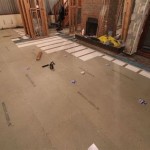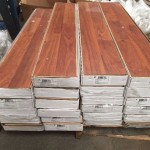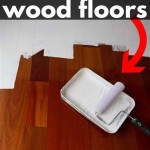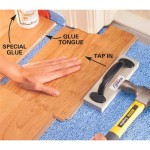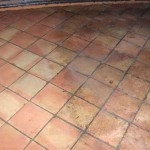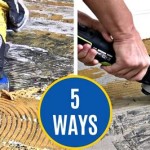How To Remove Linoleum Flooring From Wood Subfloor
Linoleum flooring, a popular choice in the past due to its durability and affordability, is often found in older homes. However, as tastes evolve and homeowners seek new flooring options, the need to remove linoleum from wood subfloors arises. While the task might seem daunting, removing linoleum is achievable with the right tools and techniques. This article will break down the process step-by-step, providing essential information and tips to ensure a successful removal.
Preparing for Removal
Before embarking on linoleum removal, it's vital to prepare the work area and gather the necessary tools and safety gear. This initial step will streamline the process and ensure a safe and efficient removal.
The first step is to clear the area. Remove all furniture, appliances, and other objects from the room where the linoleum flooring is located. This will provide ample space for maneuvering and working. Next, protect yourself by wearing safety glasses and gloves to shield your eyes and hands from potential debris and splinters. A dust mask is also highly recommended to prevent inhaling dust particles generated during the removal process.
After ensuring safety, gather the necessary tools. You will need a utility knife, a pry bar, a hammer, a scraper, a bucket, a shop vacuum, and a dustpan. These basic tools will be sufficient to remove the linoleum and prepare the subfloor for the installation of new flooring.
Removing the Linoleum
Once the area is clear and safety precautions are in place, the linoleum removal process can begin. The method used will depend on the type of linoleum and its adhesive.
For linoleum tiles, start by carefully prying up a corner tile with a pry bar. Once the tile is loose, use a scraper to remove any adhesive residue remaining on the subfloor. Continue prying up and removing the remaining tiles, working methodically across the area. For sheet linoleum, begin by scoring the linoleum along its seams using a utility knife. This will help to create breaks in the linoleum, making it easier to remove. Next, use a pry bar to lift a corner of the linoleum sheet. Pull back the linoleum sheet using the pry bar, peeling it away from the subfloor. If the linoleum is stuck firmly, you can use a hammer to gently tap on the pry bar to help loosen the linoleum.
As you remove the linoleum, be mindful of the adhesive. Some linoleum is attached with an adhesive that comes off easily, while others have a more stubborn adhesive requiring additional effort. For stubborn adhesive, use a scraper to remove as much as possible, applying gentle pressure to avoid damaging the subfloor. If the adhesive proves difficult to remove completely, consider using a chemical adhesive remover. Be sure to follow the manufacturer's instructions carefully, and adequate ventilation when using chemical removers.
Preparing the Subfloor
Once the linoleum is removed, it's essential to inspect and prepare the subfloor for the installation of new flooring. This step ensures the new flooring will be installed properly and the longevity of the installation.
Start by cleaning the subfloor thoroughly. Use a shop vacuum to remove any debris, dust, or adhesive residue. Consider sanding the subfloor to remove any unevenness or rough patches. If the wood subfloor is damaged, repair or replace the damaged sections before installing new flooring. Additionally, consider applying a moisture barrier to prevent moisture from penetrating the wood subfloor.
After cleaning and repairing the subfloor, it's essential to ensure it is level. Use a level to check the subfloor's flatness across the area. If the subfloor is uneven, use a leveling compound to create a smooth and even surface. Once the subfloor is level, allow it to dry completely before installing new flooring.
By following these steps, you can successfully remove linoleum flooring from a wood subfloor, preparing the area for new flooring installation. Remember safety precautions and proper tools are crucial to a smooth and successful removal process.
Remember to consult with a professional if you are unsure about any aspect of the removal process or if you encounter any unforeseen challenges.

How To Remove Old Vinyl Or Linoleum Flooring Kitchens And Bathrooms

How To Remove Vinyl Linoleum Tile And Adhesive From Plywood Subfloors

How To Remove Linoleum 13 Steps With S Wikihow

How To Remove Vinyl Flooring Prep For An Lvp Installation

What You Should Know About Removing Old Linoleum Or Vinyl Flooring Hq Longwood Fl

Removing Linoleum Flooring From Wood Subfloor The Easy Way

How To Remove Old Linoleum From Wood Floors Floor Sanding

How To Remove Linoleum 13 Steps With S Wikihow

How To Remove Underlayment Subfloor

How To Easily Remove Linoleum Houseful Of Handmade
See Also


